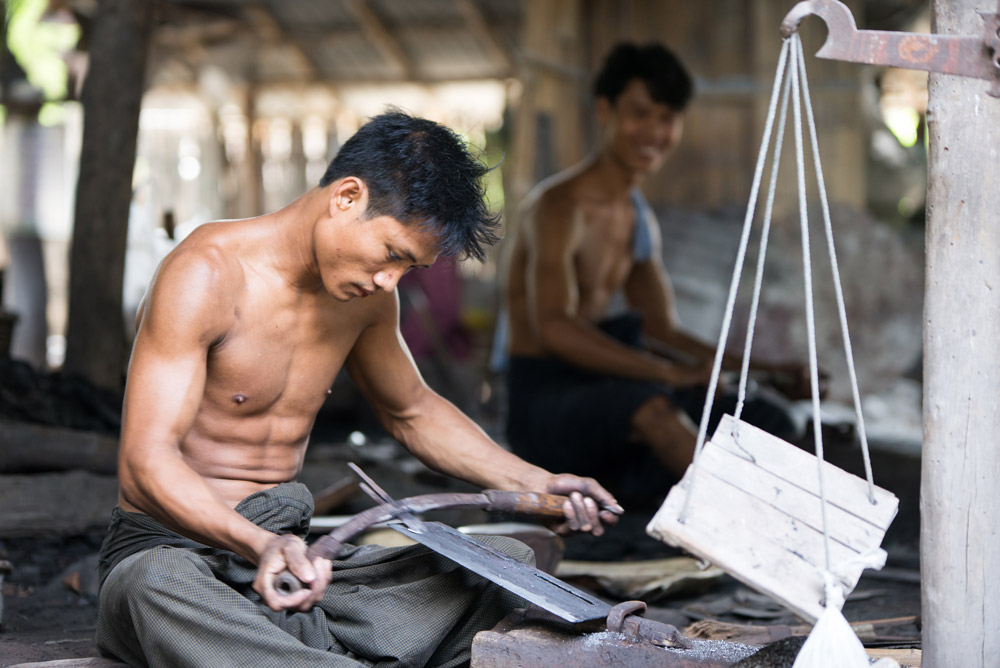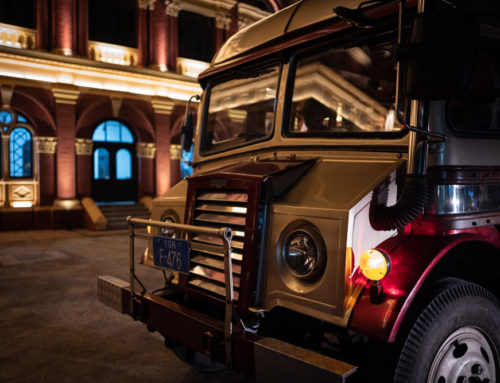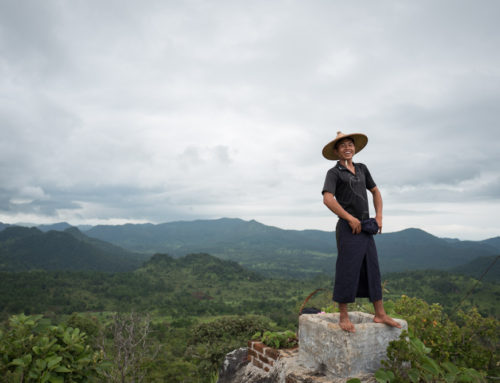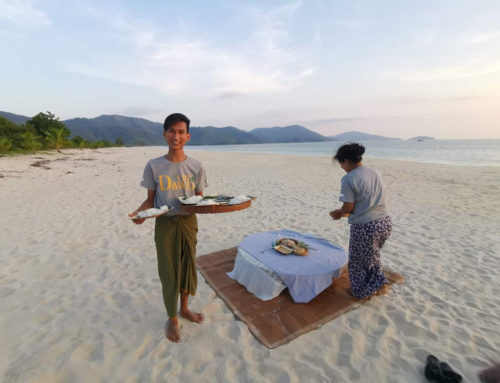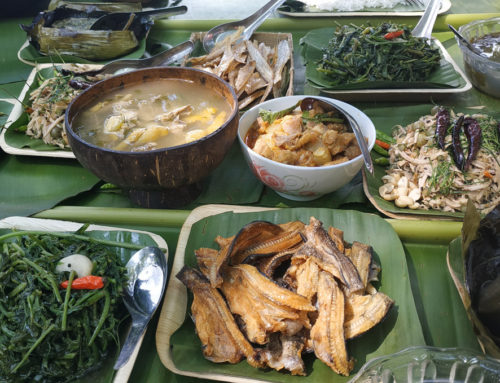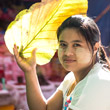BLACKSMITHS, MONASTERIES
AND LOTUS LEAVES

![]() OVERVIEW
OVERVIEW
Very few travellers explore the western bank south of Bagan, but those who do will be rewarded with a “Classic Myanmar” experience quite unlike any other. Leaving the crowds of the ancient capital far behind, this full day tour will see you explore one of Tour Mandalay’s favourite local markets, Ta Nyaung blacksmith village, two impressive monasteries and the obscenely picturesque Watthae Lake. In contrast to its remote and laid-back nature, the 200-kilometre return route, once set the scene of the Anglo-Burmese War and the equally gruelling Burma Campaign; subtle reminders of this can be found along the way. Whilst that will surely whet the appetite of history buffs, the opportunity to learn about lotus weaving and birdwatch will hopefully appeal just as much to textile enthusiasts and photographers.
![]() PACE
PACE
Easy going
![]() TOUR PERIOD
TOUR PERIOD
Full day
![]() HIGHLIGHTS
HIGHLIGHTS
- Break up the journey at Chauk and wander through one of Myanmar’s best local markets.
- Turn up the heat in Ta Nyaung village as you watch blacksmiths go about forging steel.
- Learn about the warrior monks of Bo Ottama Fort.
- Meet the monks Salin’s Yoke Sone Kyaung, one of our favourite monasteries in the country.
- Slow down the pace at Watthae Lake, a picturesque expanse home to birds and lotus farmers.
- Witness the production of lotus fabric in a home-cum-lotus weaving workshop.
![]()
ITINERARY IN DETAIL
(Click to read)
For an extremely authentic, yet slightly more low-key experience, the two-hour journey to the small town of Salin comes highly recommended. To break up the 90km journey, we’ll stop at Chauk’s bustling local market; very few foreign visitors make it here, so your presence will be sure to turn a few heads.
Leave Chauk via the impressive Anawrahta Bridge, named after the founder of the once mighty Pagan Empire. Shortly after crossing, it won’t be long until we arrive at Ta Nyaung village, home to a small number of blacksmith workstations; here you can personally witness the enterprising locals wielding a range of hardware ranging from knives to farming equipment.
Another worthwhile stop is Ko Saung Monastery, or Bo Ottama Fort. Built in 1819, this four-tiered, somewhat Japanesque structure, features a large pillared prayer hall and an underground cellar; revolutionary soldiers are said to have taken refuge here during the Anglo-Burmese war.
At some point we’ll stop for lunch (not included). Options here are limited, so please do not expect anything overly extravagant. The region is however renowned for its rice, giving you all the more reason to request an extra portion of the sticky stuff.
Next, we’ll visit Salin’s Yoke Sone Monastery, not to be confused with Salay’s Yoke Sone Monastery, a charming wooden structure built in 1868; be sure to keep an eye out for the Japanese clock, which was supposedly installed during the Japanese occupation (1942-1945) and the antique bookshelf with a Victoria and Albert crest carved into the top.
Just across the road you’ll find Watthae Lake, a 1000-acre expanse dotted with thousands of lotus leaves. Designated a bird sanctuary and a popular spot with lotus farmers, it’s an extremely photogenic location; make sure you still have enough juice in your camera battery!
Located nearby is a home-cum-lotus weaving workshop. Step inside for a chinwag and learn about how these skilful weavers go about manufacturing this much sought-after fabric.
Before embarking upon the two-and-a-half-hour journey back to Bagan, there’s an option to stop a small and long-forgotten war cemetery; here lies Private (PTE) J. Manship and other British soldiers who fought alongside him in the Anglo-Burmese War.
![]()
INCLUSIONS
- Transportation to/from hotel in a shared air-conditioned vehicle
- English speaking tour guide (for other languages, please enquire)
- Drinking water and hand towel
![]()
EXCLUSIONS
- Lunch
- Accommodation
- Any other service not mentioned
![]() NOTES
NOTES
- The drive from Bagan to Salin and vice versa will take approximately two and a half hours. The length of this is more noticeable on the way back, so we’d recommend coming prepared with a good read and some music.
- Due to the remote nature of these destinations, it’s important to stress that lunch options will be limited and of a basic nature.
- You will be expected to remove your footwear and avoid showing too much skin when entering the featured monasteries.
- A supplementary fee may apply on certain days – Tour Mandalay will inform you of this beforehand.
![]() PRINT
PRINT
![]() LOCATION
LOCATION

